Carlo Harvey
Audio-Visual-Olfactory Resource Allocation for Tri-modal Virtual Environments
Feb 07, 2020

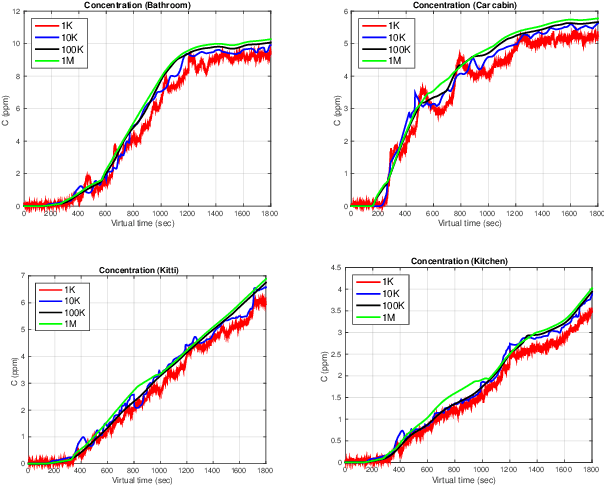
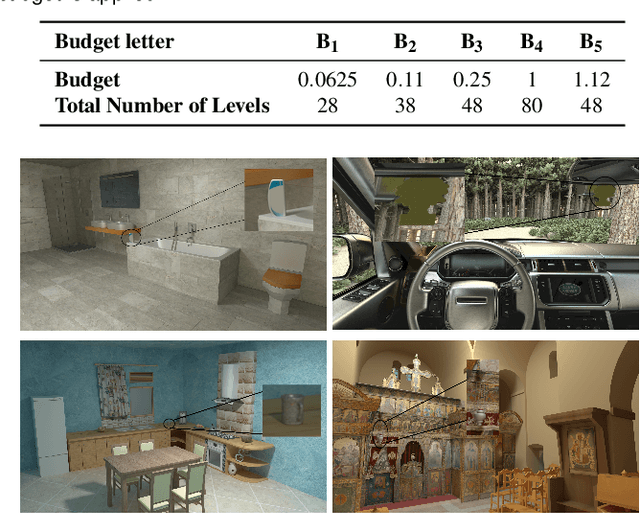
Abstract:Virtual Environments (VEs) provide the opportunity to simulate a wide range of applications, from training to entertainment, in a safe and controlled manner. For applications which require realistic representations of real world environments, the VEs need to provide multiple, physically accurate sensory stimuli. However, simulating all the senses that comprise the human sensory system (HSS) is a task that requires significant computational resources. Since it is intractable to deliver all senses at the highest quality, we propose a resource distribution scheme in order to achieve an optimal perceptual experience within the given computational budgets. This paper investigates resource balancing for multi-modal scenarios composed of aural, visual and olfactory stimuli. Three experimental studies were conducted. The first experiment identified perceptual boundaries for olfactory computation. In the second experiment, participants (N=25) were asked, across a fixed number of budgets (M=5), to identify what they perceived to be the best visual, acoustic and olfactory stimulus quality for a given computational budget. Results demonstrate that participants tend to prioritise visual quality compared to other sensory stimuli. However, as the budget size is increased, users prefer a balanced distribution of resources with an increased preference for having smell impulses in the VE. Based on the collected data, a quality prediction model is proposed and its accuracy is validated against previously unused budgets and an untested scenario in a third and final experiment.
Learning to Observe: Approximating Human Perceptual Thresholds for Detection of Suprathreshold Image Transformations
Dec 13, 2019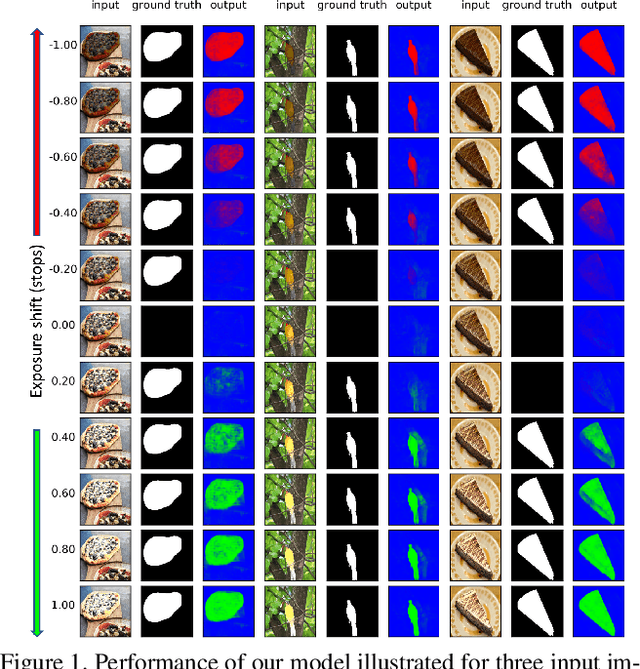
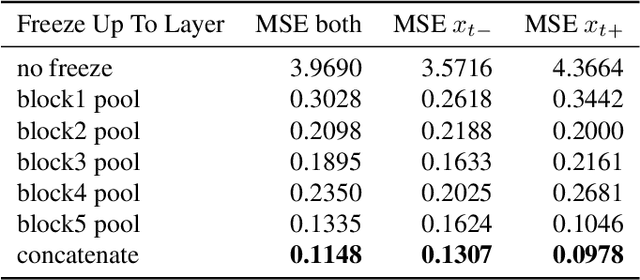
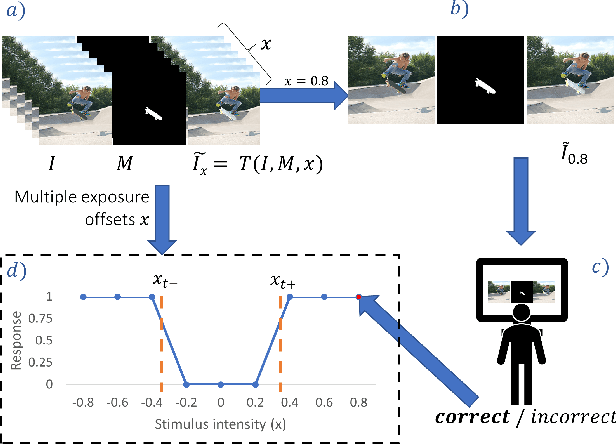
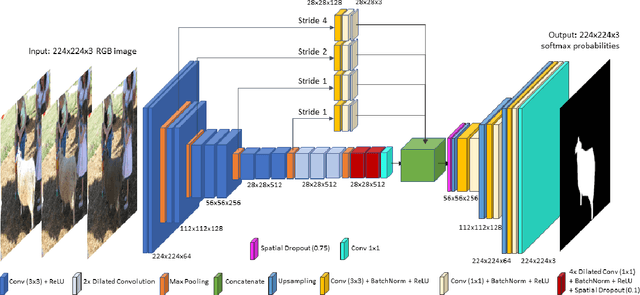
Abstract:Many tasks in computer vision are often calibrated and evaluated relative to human perception. In this paper, we propose to directly approximate the perceptual function performed by human observers completing a visual detection task. Specifically, we present a novel methodology for learning to detect image transformations visible to human observers through approximating perceptual thresholds. To do this, we carry out a subjective two-alternative forced-choice study to estimate perceptual thresholds of human observers detecting local exposure shifts in images. We then leverage transformation equivariant representation learning to overcome issues of limited perceptual data. This representation is then used to train a dense convolutional classifier capable of detecting local suprathreshold exposure shifts - a distortion common to image composites. In this context, our model is able to approximate perceptual thresholds with an average error of 0.1148 exposure stops between empirical and predicted thresholds. It can also be trained to detect a range of different pixel-wise transformation.
 Add to Chrome
Add to Chrome Add to Firefox
Add to Firefox Add to Edge
Add to Edge